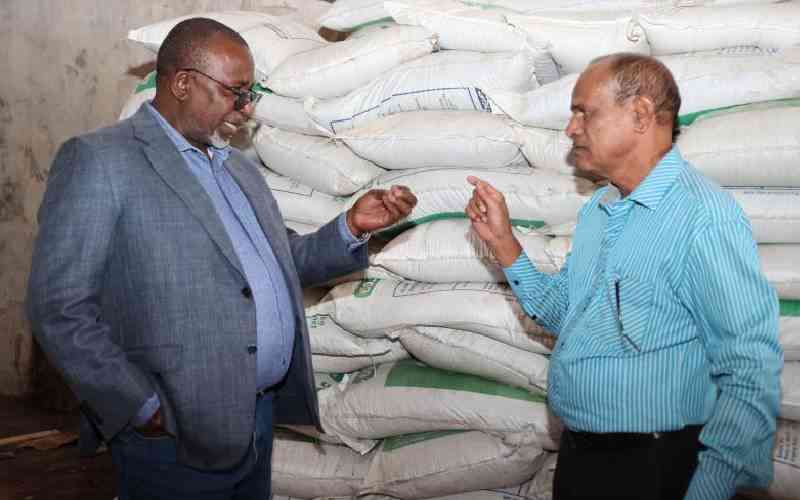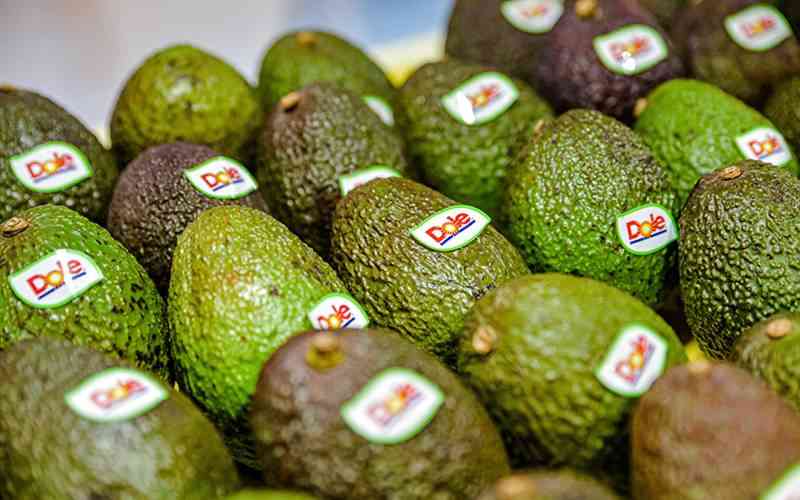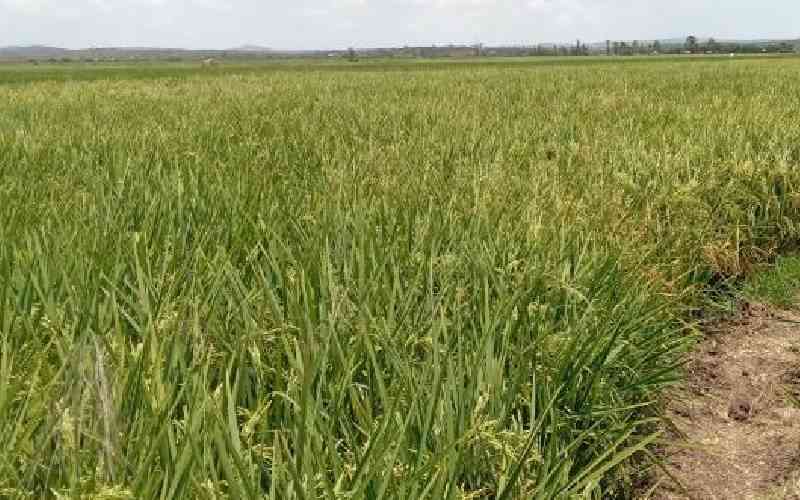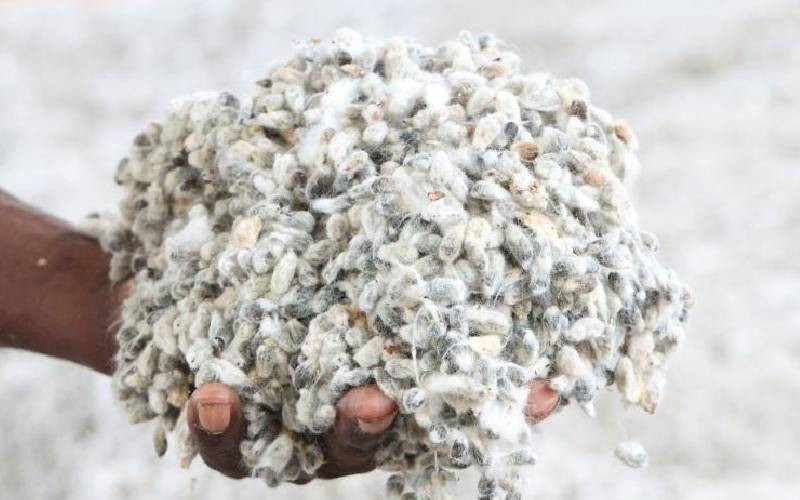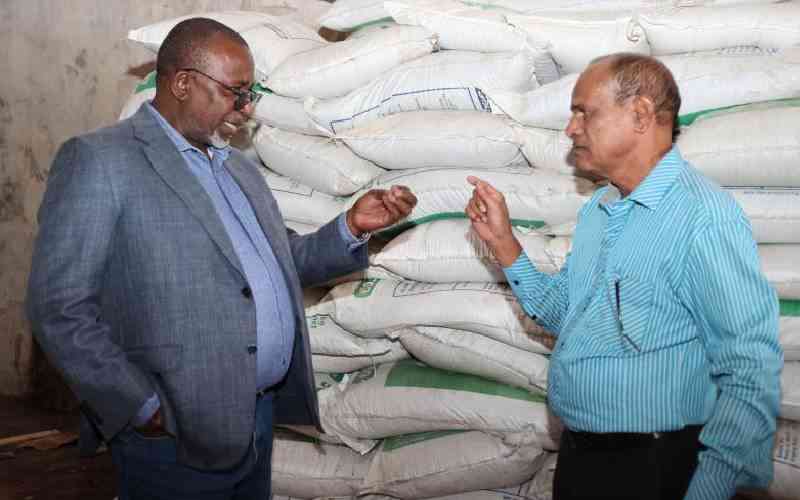Six years ago, Mary Ondolo realised her salary as a nursery school teacher was not enough to feed her family of nine children.
Ondolo from Ndoswa village in Molo Sub-County, had to think of a brilliant plan B.
“I an early childhood teacher but I was not making sufficient money to cater for my family’s needs. Parents were not paying school fees on time. When I saw the potential in farming, I decided to quit my job,” Mrs Ondolo says.
She started scouting for a crop that fetches good money.
One day she visited a friend in Olenguruoni area, 15 kilometres from her home, and was attracted by her yellow and red tree tomatoes on her quarter acre farm.
Despite beautifying the farm, the fruits were earning the farmer decent income.
Ready market
“I inquired from the farmer and she took me through the process of planting to harvesting. He also assured me the fruits have a ready market,” recalls Ondolo.
When she went back to her home, she bought a few tomato tree seedlings from a friend working at Baraka Agricultural Training Institute in Elburgon. She later dried some of the seeds, established a nursery bed where she grew the seedlings.
“They did so well and within eight months, they were sprouting with fruit. The demand was overwhelming,” she says.
She now harvests an average 500 fruits daily during prime harvest season. She sells her produce to local markets including Neisuet, Njoro and Marishoni. Individuals also make orders.
The farmer sells a fruit at Sh10.
“I earn approximately Sh500 daily from selling the fruits. The demand is so high that customers flock my farm to book fruits in advance,” she adds.
Besides selling fruits, she prepares seedlings that she sells at Sh50 per seedling to farmers and agricultural extension officers who use them in training.
She sells an average of 100 seedlings in a month earning her Sh5,000.
Stay informed. Subscribe to our newsletter
“Because of this venture I am now independent. Before, I used to depend on everything from my husband,” says the former teacher.
She is planning to increase number of tree tomato trees to more than 1,000 to meet the market demand.
So what are some of the benefits of this venture?
Bumper yield
“It requires minimal work and once the tree produces fruit, a farmer will always have something to harvest every season,” she says.
Farmers with small farms can plant the tree in between main crops and along the farms because it does not affect production.
One of her top secrets for bumper yield is mulching to retain soil moisture.
Mulching also prevents growth of weeds.
“This tree is vulnerable to dry weather that causes withering and falling of fruits before maturity.”
According to her, during fruit bearing stage that occurs after eight months of planting, farmers should support the trees to avoid branches from falling due to being laden with fruits.
Tree fruit can be grown from seeds or cuttings. Transplanting of tree tomato seedlings can be done at six weeks of nursery establishment.
For proper germination and production, seedlings should be planted in a hall measuring four feet with spacing of five feet distance from one plant to the next.
Compost manure can be used during planting to improve soil nutrients for proper germination.
Pruning is done to ensure the trees continue bearing healthy fruits and making them stronger.
Seedlings are pruned the first year after planting to a height of between 0.9 to 1.2 meters.
During pruning, new shoots close to the main branches should be allowed to grow so that the tree does not develop a broad top with fruits on the outer edges, which are prone to damage by wind.
“Annual pruning is advisable to eliminate branches that are no longer fruiting,” she advises.
However, the tree is prone to powdery mildew that causes leaves to fall off. But this can be controlled with application of copper oxychloride.
Pest control
Tree tomato farms are also infested with moles and pests including aphids, thrips whiteflies and nematodes that can easily be controlled by observing field sanitation.
Kenya Agricultural Production Program officer Peter Kimani says selection of planting sites is also important for growth of the fruit.
Mr Kimani says tree tomatoes do well when planted on land that has not had any crop for two or three seasons.
An acre can accommodate about 1,200 trees.
“Proper field management is encouraged for higher production,” says Kimani.
 The Standard Group Plc is a
multi-media organization with investments in media platforms spanning newspaper
print operations, television, radio broadcasting, digital and online services. The
Standard Group is recognized as a leading multi-media house in Kenya with a key
influence in matters of national and international interest.
The Standard Group Plc is a
multi-media organization with investments in media platforms spanning newspaper
print operations, television, radio broadcasting, digital and online services. The
Standard Group is recognized as a leading multi-media house in Kenya with a key
influence in matters of national and international interest.
 The Standard Group Plc is a
multi-media organization with investments in media platforms spanning newspaper
print operations, television, radio broadcasting, digital and online services. The
Standard Group is recognized as a leading multi-media house in Kenya with a key
influence in matters of national and international interest.
The Standard Group Plc is a
multi-media organization with investments in media platforms spanning newspaper
print operations, television, radio broadcasting, digital and online services. The
Standard Group is recognized as a leading multi-media house in Kenya with a key
influence in matters of national and international interest.

